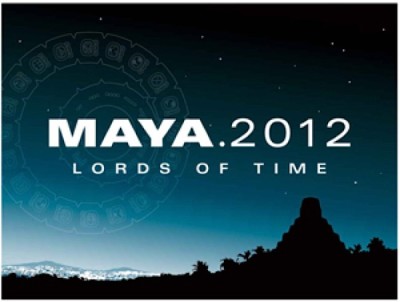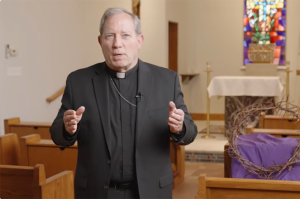Mayan 'Apocalypse' 2012: Top 5 Facts About the Maya
Dec. 21, 2012, has finally arrived and the world is still here. The sun is expected to set tonight and rise tomorrow without much incident, dismissing the apocalyptic theories some had long associated with this date, based on the end of the Maya Long Count calendar.


But will this spell the end of people's interest in the Maya?
"Many people from around the world have traveled to Belize to mark the end of the Mayan calendar and see the magnificent sites and cities they constructed during their reign in the region. They have also come to witness the next phase, the new beginning the ancient Mayans believed in," Katie Valk, founder and director of Belize Trips, explained in an email to The Christian Post.
Although the ancient civilization no longer stands, descendents of the Maya are spread over a number of regions in Latin America, including Belize, a small country located along the east coast of Central America, where Maya people represent 10 percent of its 312,000 population.
Valk says that popular interest in the Long Count calendar has been positive for Maya people, because it has encouraged many to delve and study deeper into the ancient civilization.
"I am also hoping this will serve the current Maya communities and assist them in ways to access better education, services, infrastructure and more control over their villages in the countries in which they reside," the travel agent added.
Valk does not believe that the world will lose interest in the fascinating Maya, even though there is no longer a countdown date to look forward to. But just what attracted people to the Maya civilization in the first place? What was so special about their culture and way of life, which came and went along with countless of others in the timeline of human history?
Below are some of the most interesting aspects of the Maya that archaeologists and scholars have gathered from excavating their ancient temples and palaces and studying the many artifacts they left behind:
The Maya Consisted of Many Groups of People
Although often called simply "the Maya," the central American peoples that archeologists commonly refer to by that name include a number of regional cities and cultures of the time period who shared many similarities, but also differences in terms of dress, customs, and beliefs. Occupying parts of present day Mexico, Belize, Guatemala, El Salvador and Honduras, the earliest Maya settlements date back to around 1800 B.C. in what is known as the Pre-classic or Formative Period.
It was not until the Classic period, 250-900 A.D., that the Maya reached the heights of their civilization, however.
During this golden age, the Maya built elaborate plazas, palaces, temples and pyramids, and spread over 40 cities, some of which held up to 5,000 people. Supported by a population of over 2 million, a significant number for that time, the Maya flourished in the tropical rainforest climate of their region, a unique feat on its own, given that most other ancient cavitations developed in more stable, drier climates.
The Collapse of the Maya Remains a Mystery
While Maya communities scattered across Central America still exist today and preserve their culture in different ways, the sudden decline of this great civilization during the late 9th century remains a mystery to historians and archeologists. During that time period, their magnificent cities were one by one abandoned, and by 900 A.D. their entire civilization had pretty much collapsed, which still has archeologists scratching their heads.
Two competing theories exist as to why this happened – some historians believe that the Maya exhausted their natural resources, and combined with large droughts in the area, they were unable to sustain their population and had to abandon the cities. Others believe that since the Maya had no centralized authority, inter-city warfare might have led to trade alliances breaking down, making life much more difficult for people and sending traditional systems into chaos.
Whatever the reason, by the time the Spanish invaders arrived to colonize Central America in the 16th century, the Maya civilization was long gone – although aspects of it were incorporated into the larger Aztec empire.
Hundreds of Gods, Spirits and Supernatural Forces Dominated Maya Beliefs
The Maya devoted a lot of their time to religion and worshipped a plethora of different gods who had various characteristics. Itzamná was the most important god, who controlled the fire and ruled the heavens. Kukulcán, the Feathered Serpent, is one of their most recognizable deities, because his image appeared on many temples, and was later adopted by the Aztecs.
Other gods included Chac, a hooked-nose god of rain and lightning, Bolon Tzacab, the god of the royal descendents, and various other smaller deities inspired by nature.
While the Maya never had a singular king, their various rulers were thought to be intermediaries between the gods and the people, and thus considered to be semi-divine.
The Maya were also strong believers in the afterlife, and important figures were often buried in elaborate tombs with valuable offerings. The souls of the dead were believed to set on a journey though the underworld, which was filled with sinister gods and challenges. The Maya viewed heaven and hell as having multiple layers, where a different god ruled each realm.
Maya Religion Spurred Their Impressive Scientific Feats
The many religious rituals the Maya participated in depended on the rotation of time and the marking of calendar dates, which spurred the ancient civilization to develop impressive systems of mathematics and astronomy which were way ahead of their time.
The Maya developed the use of the number zero as a place-holder within their positional numerical system, while in science they accurately measured the solar year in use today (365 days), compiled remarkably precise tables of the position of the moon and nearby planets without the use of a telescope, and accurately predicted major cosmic events like solar eclipses.
The Maya had a great fascination with time, which they based many of their religious rituals on, and devised different calendars that helped them in agriculture and hunting. The most famous of their calendars, the Long Count calendar, also perhaps the most referenced Maya artifact in popular culture, has led to the biggest misconception people have of the Maya people.
The Maya Never Predicted an "Apocalypse"
Many people hold the notion that the Maya predicted Dec. 21, 2012 would be the "end of the world." But in actuality, the Maya never wrote anything about earth-shattering cataclysmic events or the death knell for the human population, or any of the fears that NASA has said are leading people to consider suicide in preparation of a possible "Doomsday."
The misconception stems from the Maya Long Count calendar, which was widely used on Maya monuments and has been a great object of interest for scholars and archeologists. The Maya divided this calendar into 13 ages, or Baktuns, each consisting of 144,000 days. Smaller cycles included the k'atun (7,200 days), tun (360 days), uinal (20 days) and kin (one day). The coming of each new Baktun was not feared, but celebrated by the people.
The calendar stretches back to Aug. 11, 3114 B.C, believed to be the mythical Mayan creation date, and ends on Dec. 21st, 2012.
Archeologists have insisted that there is nothing in this date that suggests an apocalypse, although the exact reason why the Maya did not add any other ages after the 13th remains a mystery. Since that number was considered divine, some people believe that a significant change is expected to befall Earth, while others suggest that the Maya simply did not get around to adding any further ages to the calendar before their civilization collapsed.
Whatever the real reason behind the calendar ending where it did, it is possible no one will never know.
A final interesting note is that the Dec. 21 date is only the closest representation on the modern Gregorian calendar that correlates to the end of the 13th Baktun – and some researchers have said that Dec. 23 or 24 might actually be a more accurate fit for the final date on the Maya Long Count Calendar.





























